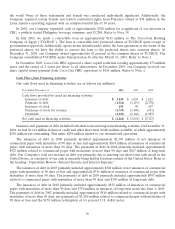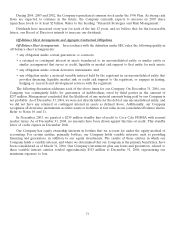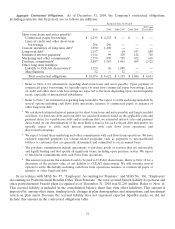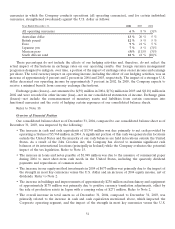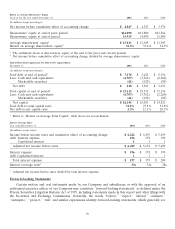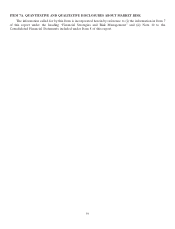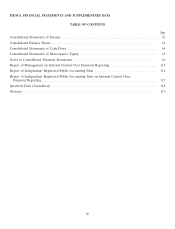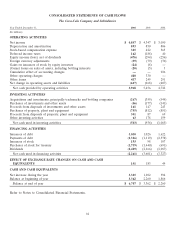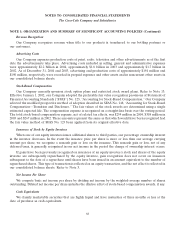Coca Cola 2004 Annual Report Download - page 60
Download and view the complete annual report
Please find page 60 of the 2004 Coca Cola annual report below. You can navigate through the pages in the report by either clicking on the pages listed below, or by using the keyword search tool below to find specific information within the annual report.
• Fluctuations in the cost and availability of raw materials; the cost of energy, transportation and other
necessary services; our ability to maintain favorable supplier arrangements and relationships; and our
ability to avoid disruptions in production output caused by events such as natural disasters, power
outages, labor strikes or the like.
• Our ability to effectively align ourselves with our bottling system as we focus on increasing the investment
in our brands; seeking efficiencies throughout the supply chain; delivering more value for our customers;
and better meeting the needs of our consumers.
• Changes in laws and regulations, including changes in accounting standards, taxation requirements
(including tax rate changes, new tax laws and revised tax law interpretations), laws concerning food and
beverages, competition laws, employment laws and environmental laws in domestic or foreign jurisdictions.
• Our ability to penetrate developing and emerging markets, which also depends on economic and political
conditions, and how well we are able to acquire or form strategic business alliances with local bottlers and
make necessary infrastructure enhancements to production facilities, distribution networks, sales
equipment and technology. Moreover, the supply of products in developing markets must match
customers’ demand for those products, and due to product price and cultural differences, there can be no
assurance of product acceptance in any particular market.
• Water quality and quantity. Water is a limited resource facing unprecedented challenges from
over-exploitation, increasing pollution and poor management. As demand for water continues to increase
around the world and as the quality of the available water deteriorates, our system may incur increasing
production costs, which may materially adversely affect our Company’s profitability in the long run.
• Our ability to achieve earnings forecasts, which are generated based on projected volumes and sales of
many product types, some of which are more profitable than others. There can be no assurance that we
will achieve the projected level or mix of product sales.
• Other risks and uncertainties detailed from time to time in our Company’s Securities and Exchange
Commission filings.
The foregoing list of important factors is not exclusive.
Additional Information
For additional information about our operations, cash flows, liquidity and capital resources, refer to Item 8.
For additional information concerning our operating segments refer to Note 19.
58




